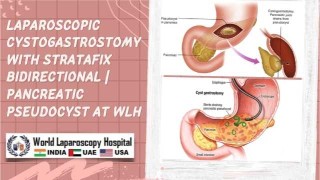A Poem of Laparoscopic Surgery written by Dr R K Mishra
Add to
Share
1,793 views
Report
2 years ago
Description
"Laparoscopic surgery, a modern art Performed with skill and a steady heart A camera and tools, small and precise Help guide the surgeon, to make incisions precise" "The abdomen, once a mystery Now visible in high-definition clarity The surgeon's hands work deftly and swift To mend and heal, the body's rift" "A tiny cut, a probe is slid Inside the body, where it's needed A hernia fixed, a tumor removed With minimal pain, the patient improved" "Recovery swift, with less scarring A procedure, once daunting, now less alarming Laparoscopic surgery, a marvel of our time Helping to heal, with precision sublime." Poetry is an art form that allows writers to express themselves through the use of language in a creative and imaginative way. A poem can evoke emotions, paint vivid images, and capture the essence of a moment or experience. Poems come in many different forms, including sonnets, haikus, free verse, and more. In this essay, we will explore the beauty of poetry and its power to captivate and inspire. At its core, poetry is about communication. It is a way for the poet to share their thoughts, feelings, and experiences with the reader. Unlike prose, which is typically written in paragraphs and follows a specific narrative structure, poetry is more fluid and open-ended. Poets often use devices such as rhyme, rhythm, and imagery to create a unique and engaging experience for the reader. One of the most powerful aspects of poetry is its ability to convey emotions. Poems can be deeply personal and intimate, allowing the writer to express their innermost thoughts and feelings. For example, a poet may use metaphor and imagery to describe the pain of a broken heart, or the beauty of a sunset. These images can resonate with readers on a deep level, connecting them with the poet's emotions and experiences. Another aspect of poetry that makes it so compelling is its ability to paint vivid pictures with words. A skilled poet can use language to create a sensory experience for the reader, bringing the sights, sounds, and smells of a scene to life. For example, consider the following excerpt from William Wordsworth's "I Wandered Lonely as a Cloud": "I wandered lonely as a cloud That floats on high o'er vales and hills, When all at once I saw a crowd, A host, of golden daffodils;" Through Wordsworth's use of vivid imagery and metaphor, we can almost see the rolling hills and golden flowers that he describes. This ability to transport the reader to another time and place is one of the hallmarks of great poetry. Finally, poetry has the power to inspire and motivate readers. Through their words, poets can challenge us to see the world in a new light, to question our assumptions, and to strive for something greater. For example, consider Maya Angelou's "Still I Rise": "Just like moons and like suns, With the certainty of tides, Just like hopes springing high, Still I'll rise." In these lines, Angelou encourages us to persevere in the face of adversity, to believe in ourselves and our abilities, and to keep pushing forward no matter what challenges we may face. These words can be a source of strength and inspiration for readers, reminding us that we are capable of overcoming even the most daunting obstacles. In conclusion, poetry is a unique and powerful form of expression that allows writers to share their thoughts, feelings, and experiences in a creative and imaginative way. Through the use of language, poets can convey emotions, paint vivid pictures, and inspire readers to see the world in a new light. Whether we are reading the works of famous poets or writing our own verses, poetry has the ability to connect us with our deepest selves and with the world around us.
Similar Videos






